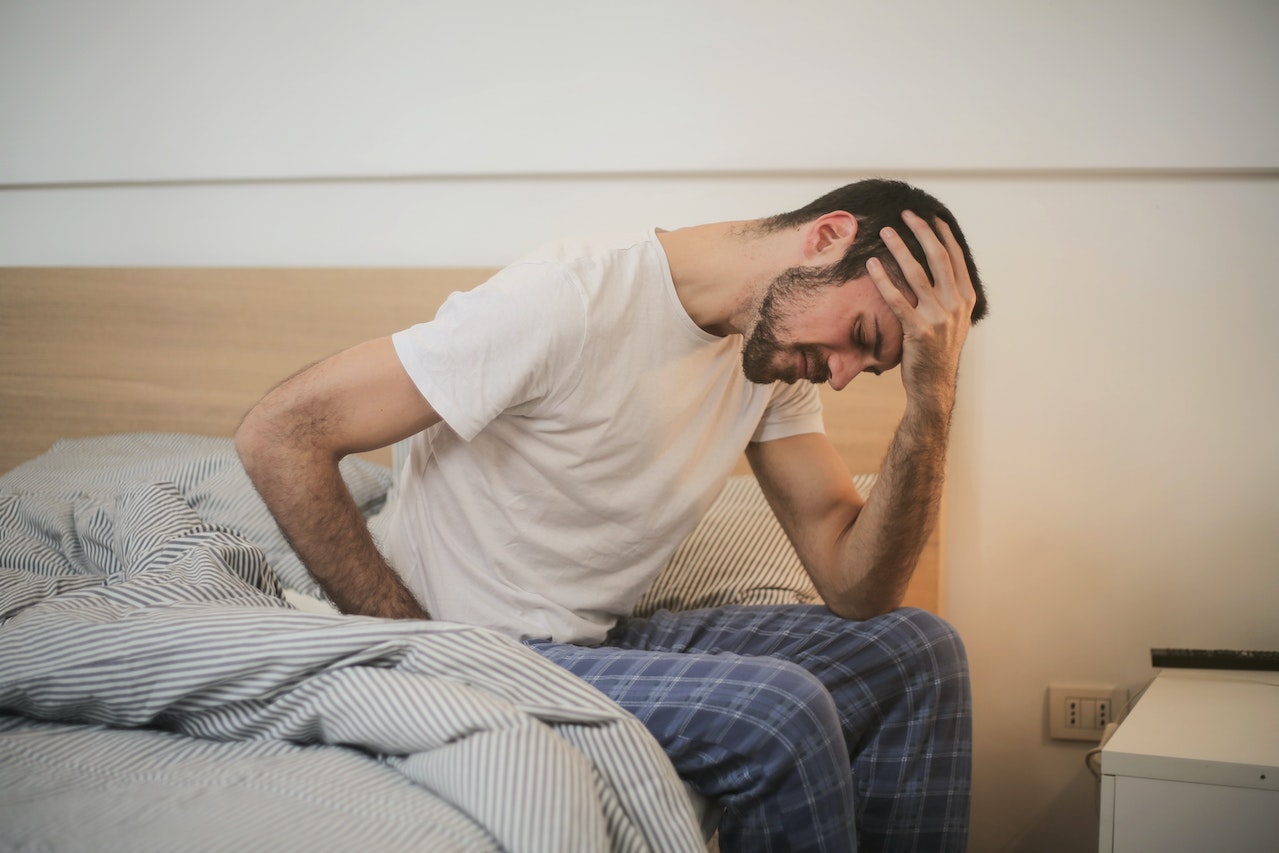Even The Most Active Can Have Back Pain + Use Plank To Relieve


Most of the time we just don’t think about our everyday movements like walking, or sitting, until we are not able to do them. We don’t worry too much about our backs, and their crucial role in our ability to move… or not. Back pain is not only an individual problem, but it is also a longstanding and significant economic issue. One study from 2002 showed that every year 83 million working days were lost due to back pain. Additionally, even as far back as 2002, more than 12 million dollars were already being spent in healthcare due to back pain. (1)
Back Pain Around The World
As so many Americans are faced with chronic back pain every day, it’s hard to believe that this isn’t the case in other parts of the world. This fact puzzled integrative therapist Esther Gokhalet when she was affected by back pain because of a herniated disk after her first pregnancy. So, she decided to research the absence of back pain in other cultures.
She observed that indigenous people living in small villages throughout Ecuador, Portugal, and West Africa never seemed to encounter back pain problems. Ms. Gokhale concluded that the inhabitants of these back pain-free places possessed a “J” shaped spine rather than an “S” shaped spine, common in America and most of the Western World. She concluded that this was because most people in these communities regularly engage in hard labor for long hours, lifting heavy objects, which seem to help them develop a stronger core. After all her research, she developed “the Gokhalet method” to help individuals achieve a back pain free life. (2)
Athletes With Back Pain
Most of the time, we associate back problems with lack of activity, a consequence of a sedentary lifestyle. Many hours sitting at a desk, in a car, or the absence of an exercise routine certainly can be risk factors for developing back pain. However, back pain can be experienced by people that have active lifestyles too. For example, many athletes are known to experience back pain, even chronic back pain in some cases. Sports like football, basketball, soccer, golf, tennis, and running create a lot of stress on the spine. All the twisting, turning, pressure, and impact increase the risk of back injury even in the best athletes.
Stress And Back Pain
It may be hard to believe that suffering from stress can cause back pain. However, when stress is triggered either by thoughts or situations, the body experiences physical and chemical reactions while it attempts to protect itself from harm. Chemicals like adrenaline and cortisol are released into the body. In addition, an involuntary tightening of the neck, shoulder muscles, and spine occur. If this muscle tension is experienced frequently it can evolve into chronic back pain. In these cases, studies recommend that active individuals suffering from chronic back pain due to stress-related causes, may benefit from behavioral therapy, coupled with back exercises, common analgesics, and acupuncture. (3)
Core Strength For Back Pain
Core strengthening goes beyond obtaining six-pack abs. Increasing strength in the core area of the body can prevent and ease back pain. Core muscles are located throughout the body’s midsection and are used for most movements. A strong core can transfer force to the leg and arm muscles to increase effectiveness. In addition, the abdominal muscles support the back and spine. Consequently, a weak core puts stress on the back, making it work harder than it should have to.
Plank For Lower Back Pain
Who Invented Plank Exercise?
Perhaps at some point while performing a plank exercise, like so many people, you have felt time stand still. You have wondered who thought up such a torturous means of working out, and you have hated that person. Well, the origins of plank aren’t so clear, but we do know who helped to popularize it: Joseph Pilates. That’s right, the man who invented Pilates, a popular exercise method for core strengthening. The move is called the leg pull front, an exercise performed in reps for strengthening.
Why Is Plank So Good For Core Strengthening?
Some time ago, people thought that sit-ups could strengthen your core, giving you tighter abs and a slimmer waistline. Nowadays, we know that sit-ups tend to be too hard on the back, putting lots of pressure compressing the spinal discs. (4)
On the contrary, plank builds a more robust core without stress on the spine. As the muscles in the back, abdomen, and pelvis are core muscles involved in every movement our bodies make, including plank, this is an effective, safer way to fortify the core.
Can Plank Reduce Back Pain?
Studies have shown that planking can significantly reduce and aid in managing back pain as it is considered a core stabilization exercise, helping to strengthen the spinal muscles. Strong spinal muscles can hold the spine and vertebrae correctly, which can help reduce lower back pain.
A study conducted among 40 participants experiencing lower back pain placed them in a six-week exercise program. They participated in 45 minute exercise sessions, four times weekly. Researchers suggested static workouts, including plank, side plank, bridge, and Superman. At the end of the trial, the research team observed:
- Reduced pain intensity, from an initial 6/10 at the beginning of the study to 2/10 after the six week core strengthening program.
- Participants had a physical disability score of 36 (moderate disability) before the exercise trial and 16 (minimal disability) after the study. (5)
What Muscles Do Planks Work?
Whether you are performing a high plank, low plank, side plank, or any other variation of this exercise, it works a variety of core muscles such as:
- Pectorals, also known as pecs, part of the chest muscles.
- Trapezius and Rhomboid muscles, located in the upper back area.
- Serratus anterior muscles, located around the shoulders and side of the chest.
- Rectus abdominis muscles, in the abdominal region. Also known as the six-pack.
- Transverse abdominis muscles. These muscles help cinch the waist and back as core stabilizers supporting the lower back.
What Does Plank Do To The Body?
Plank is one type of exercise that engages the whole body, which helps develop a stronger core while also strengthening arms, shoulders, back, glutes, and legs. Performing plank exercises can bring benefits such as:
-
Better Core Definition
When performing a plank, the transverse abdominis, the rectus abdominis, the external obliques, and the glutes are engaged. Working this large muscle area increases the ability to lift heavy weight, enhance sports performance, allows for more efficient twisting and bending, and builds strong buttocks and back.
-
Lower the Risk of Back Injury
While performing a plank, you are able to build muscle without putting extra pressure on the spine or hips. Plank helps develop stronger back muscles, resulting in better support and stability of the back region, especially in the upper back.
-
Better Posture
Plank exercises can improve your posture, which helps joints and bones align correctly, helping them be better maintained. Better posture also means less back pain.
-
Boost Metabolism
Plank engages some of the body’s largest muscles, burning more energy than other traditional abdominal exercises like crunches or sit-ups. Performing daily plank exercises boosts metabolism both while performing the posture and for the rest of the day too.
-
Improves Balance and Flexibility
Contrary to common belief, balance does not come from the legs but the core. Stronger abdominal muscles support your balance while performing physical activities or sports. Performing planks can increase flexibility by expanding and stretching the posterior muscle group (shoulders, shoulder blades, collarbone), along with stretching the hamstrings, feet, and toes.
-
Better Mood
Plank pose has a calming effect on the nerves because it stretches muscles that build stress and tension when we spend a significant part of our day sitting. In addition, legs, thighs, and shoulder muscles get tense from sitting, causing your mind to stress, so a time out in plank can help loosen that tension.
How To Hold A Plank Position
Performing plank exercises may be challenging initially, but it will become easier as you start building strength by practicing regularly. For a solid plank, follow these steps:
- Place yourself on all fours.
- Ensure the hands are right below the shoulders.
- Step the feet back to straighten the legs one at a time, creating a straight line with your body, from head to heels.
- Tuck the tailbone toward the heels while squeezing the glutes. Draw the belly inward.
- Gaze at the floor slightly ahead of you.
- Breathe slow and steady.
- Hold the position for 30 to 60 seconds, longer if possible.
Plank Variations
While reducing lower back pain and enjoying the many other great benefits that plank can offer, try some variations to add a little spice to your exercise routine. Some good ways to change up your normal plank are:
- Forearm plank, nearly the same as regular plank, but with forearms on the ground.
- Reverse plank, done by sitting on the ground with legs extended. Lean back slightly, placing hands on the floor with fingers toward hips. Press hands down and lift hips toward the ceiling, creating a straight line through your body.
- Side plank, beginning in regular plank then flipping the whole thing to balance on the right or left side.
Once you get used to planking, and its variations, you can add pulses, hip dips, or lifting arms and legs alternately to add more challenge and increase the benefits of plank pose.
Whatever way you choose to plank, remember: It is also essential to enjoy the exercise to enhance your overall experience. Do you need back pain relief? Click here.
Sources:
- https://www.researchgate.net/publication/11261924_The_Most_Expensive_Medical_Conditions_In_America
- https://gokhalemethod.com/gokhale-method
- https://pubmed.ncbi.nlm.nih.gov/20071924/
- https://journals.lww.com/nsca-scj/fulltext/2016/12000/abdominal_crunches_are_are_not_a_safe_and.11.aspx
- https://www.ncbi.nlm.nih.gov/pmc/articles/PMC3955563/









